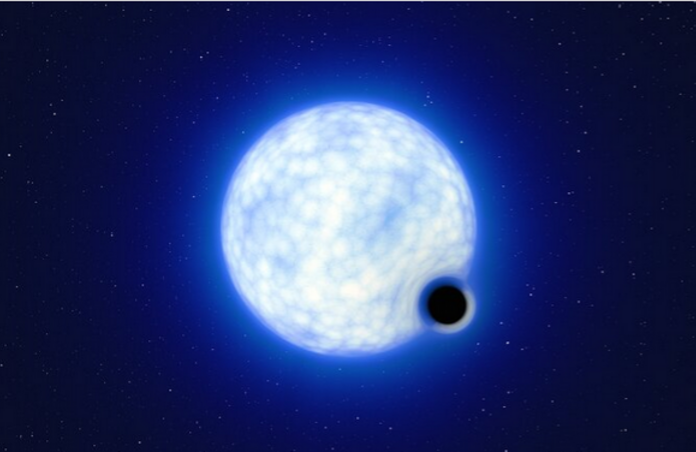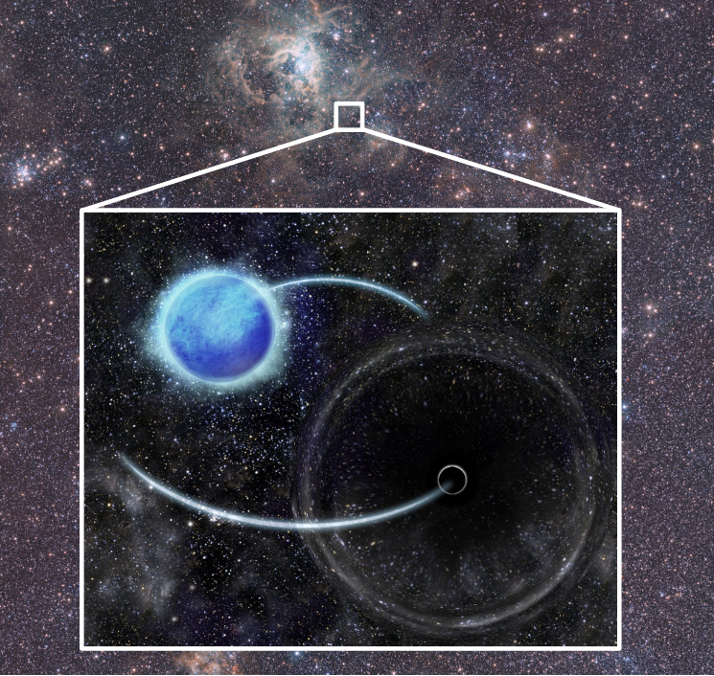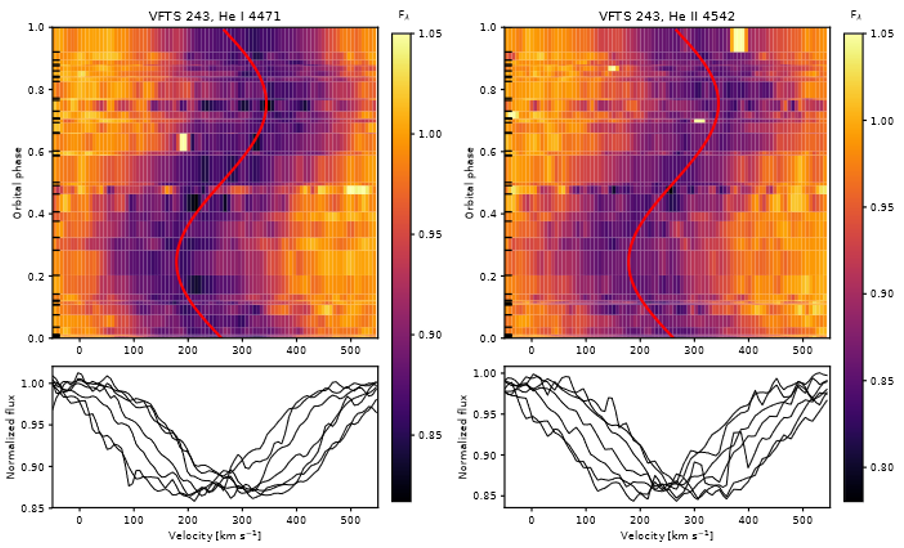First Dormant Black Hole Outside of the Milky Way Found in Binary System

The developments in the technology and methodology behind the identification of black holes continue as paper published on the 15th of July, headed by Tomer Shenar, outlines the identification of a dormant black hole, without an accretion disk. They report on VFTS-243, a binary system within the tarantula nebula, comprised of a 25 solar mass star and a previously unidentified companion. Earlier in the year, the similar discovery of black hole OB11046 was equally exciting as an example of a rogue black hole. While also dormant, the techniques used to identify these invisible giants vary significantly.
There are traditionally two possible methods that can be used to identify black holes, the more relevant of which is a finding one that feeds on stellar material, producing an accretion disk heating the material while in orbit. This will emit certain unique x-ray signatures that can be detected by telescopes on Earth. However, in the absence of this phenomena, black holes become significantly harder to find.
However, as mentioned, no such system exists in VFTS-243. As such, the goal was to find out whether the companion was another star or in fact, a black hole. The data they analysed was collected over the course of 6 years from the Very Large Telescope Flames Tarantula Survey (VFTS) and the Tarantula Massive Binary Monitoring survey (TMBM). The binary was found to have an orbital period of 10.4031 ± 0.0004 days with an eccentricity of e = 0.017 ± 0.012, falling in line with what was previously known about the system, within one standard deviation.

The conclusion for the identity of the binary companion was derived by performing spectral disentangling, which separates the spectra of VFTS-243 into constituent wavelengths, which led them to deduce that this radiation belonged to a single source ruling out the possibility of a stellar companion. However, this still left the possibility of a faint, non-degenerate star avoiding detection.
From there, the first step was to estimate the mass of the companion, which was done using three distinct methods, leading the team to a derived mass of 8.7 ± 0.5 M☉, placing the companion well above the Chandrasekhar limit (1.4 M☉) and the requirement for the progenitor to undergo a total core collapse into a black hole (2.5 M☉). To rule out the final possibility, the team constructed simulated data points and used their methods in an attempt to see whether such a companion could be identified. In trials including stars as small as, 4 M☉, they were able to use spectral disentangling to find the signature of the companion unambiguously. As such, this led them to the only remaining conclusion, being that they had successfully identified the first dormant black hole outside of the milky way.

He I and He II lines.
Of remarkable note in relation to this discovery is the nature of this black hole’s orbit and its presence in such a stable circular orbit within a binary. It would be expected that a black hole of that size must have been formed during a supernova, caused by the collapse of a previously present massive star. However, this tremendous event would have launched the companion star away, or at the very least, disrupted their orbit into a more elliptical one. Since this is not the case, it suggests that the progenitor star that formed the black hole in VFTS-243 was able to collapse directly. As such, further investigation into VFTS-243 could provide meaningful insight into black hole formation.
--
Cover Image Credit: Artistic rendition of VFTS-243 from ESO/L. Calçada
Journal Source: Tomer Shenar et al, An X-ray quiet black hole born with a negligible kick
in a massive binary within the LMC, Nature Astronomy, Vol. 6, No. 7, 2022
